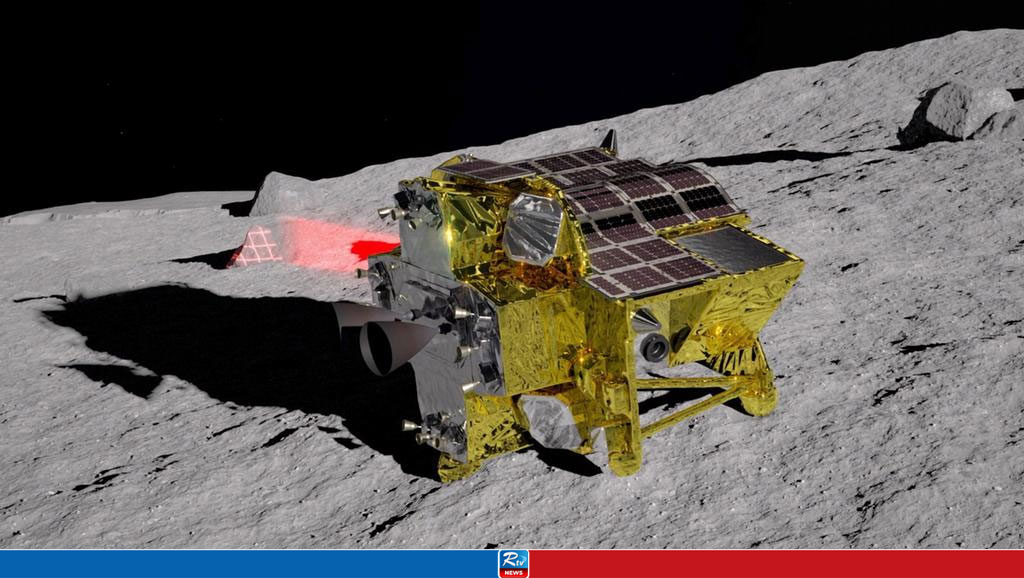Japan's SLIM 'Sniper' starts investigating the moon

After the US and Russia landed on the moon, it took decades for China and India to do it. Japan is now the fifth country to put a spacecraft on the moon.
A mere four months after Japan's first attempt to land on the moon ended in failure, the country quickly set its hopes on a second attempt. It launched SLIM — the Smart Lander for Investigating Moon — in September 2023.
The spacecraft is better known as Moon Sniper because it was designed as a "pinpoint" lander. Controllers on Earth wanted to use new technology to land this and future spacecraft at precise locations.
Is Japan's moon mission successful?
So far, yes, the SLIM mission has been a success. Japan became the fifth nation ever to have landed a spacecraft on the lunar surface on January 19/20, 2024.
No mean feat — it's tough to land on the moon .
In fact, SLIM experienced engine trouble as it came to land on the moon, leaving the spacecraft's solar panels at a wrong angle — they faced west instead of up — and it ran out of power.
But nine days later, on January 29, the Japanese space agency JAXA announced that SLIM had regained power: "Last evening we succeeded in establishing communication with SLIM, and resumed operations!"
And indeed they did: SLIM began taking scientific observations of the moon.
What is pinpoint landing?
Japanese officials say the idea is to go from an era of "landing where we can" to "landing where we want" on a celestial body with gravity, such as the moon.
The moon's gravity is about one-sixth of Earth's gravity — its pull is weaker — so you can jump about six times as high on the moon as you can on Earth. And that has an impact on how spacecraft land on the moon's surface.
But it's about more than that. Since the beginning of human lunar exploration in the 1960s, and the advent of advanced satellites, telescopes and other camera technology, researchers have gathered masses of high-definition images and other data, such as information about the moon's atmosphere. So we know more about the moon's constitution, including where we are likely to find water. Scientists want to land exactly where there is water, such as the lunar South Pole. Or, if they are interested in a specific rock type on the moon, it's important that a spacecraft can land very close by on a flat surface.
How does pinpoint landing compare with conventional landing?
The precision of conventional landers can be anywhere between "several and a dozen" kilometers (1 kilometer = 0.62 miles). That's according to JAXA, and its Institute of Space and Astronautical Science. Pinpoint landers aim to bring that range down to about 100 meters (330 feet).
How big is Japan's SLIM moon lander?
SLIM has a dry weight of 200 kilograms (440 pounds), a boxlike shape and dimensions of 2.4 meters by 1.7 meters by 2.7 meters. The mission's objective is to test lightweight vehicles to facilitate more frequent missions to moons and planets.
Does SLIM have a moon rover and cameras?
Yes. It has radar and a laser range finder to measure the altitude above the lunar surface before landing, as well as a navigation camera. SLIM uses this "vision-based navigation" technology to measure and correct its position for a pinpoint landing.
On the moon's surface, a multiband spectral camera will investigate the composition of rocks. To further investigate the surface, a probe called a Lunar Exploration Vehicle (LEV) can be detatched from the lander. The LEV includes a Transformable Lunar Robot, nicknamed SORA-Q, which is the shape of a large egg and fits in the palm of a hand.
SLIM's four-month journey the moon
Japan’s Moon Sniper was launched on September 7, 2023. Its original scheduled launch on August 28 was postponed due to strong winds.
Within a week, SLIM had completed the first critical phase of its mission, successfully sending signals to Earth and demonstrating normal functionality. It then remained in an Earth orbit until it moved into a lunar transfer orbit on October 2.
On December 25, SLIM entered an elliptical lunar orbit, in which its closest point to the moon was an altitude of about 600 km.
It began its descent toward the moon on January 19/20 at about 12:00 am (JST) — 4:00 p.m. CET (Berlin), 10 a.m. EST (New York) — and was scheduled to land on the lunar surface 20 minutes later.
Comments
Jacob Zuma barred from running in election

45 dead in South Africa bus crash, 8-year-old girl only survivor

World's most expensive cow sold for $4.3 million in Brazil

Turkey: Polls close in Erdogan's 'last election'

Italy is overtaking Germany as Europe's economic powerhouse

Lawmakers urge Biden to call out more Chinese biotech firms

Gaza death toll crosses 33,000


 Live Tv
Live Tv




